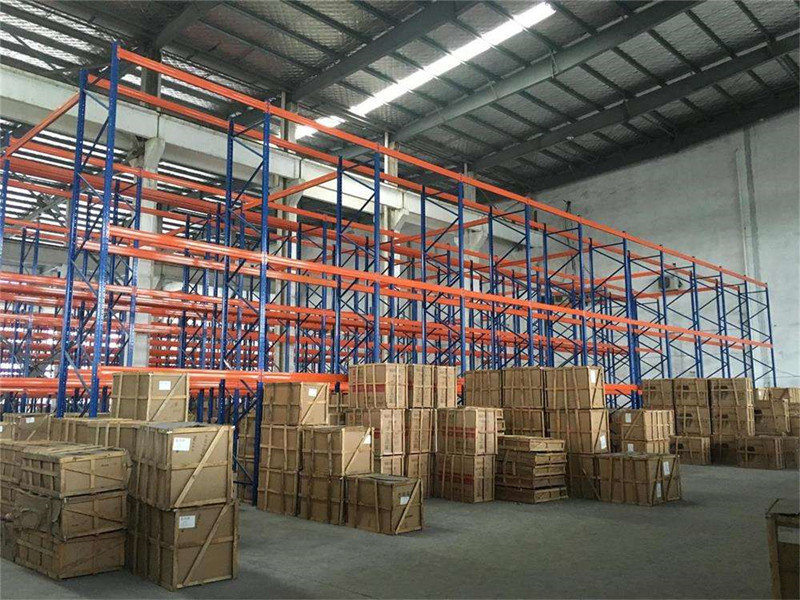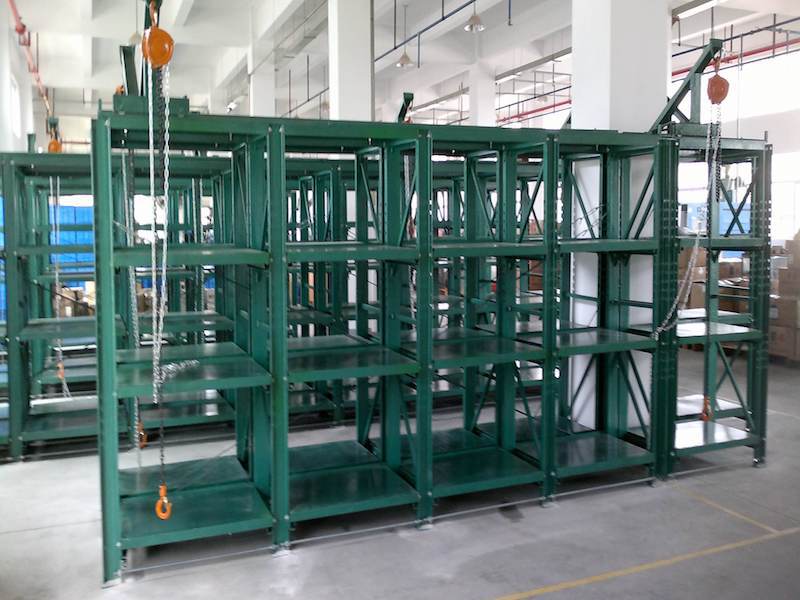Walk into any warehouse struggling with space, and you'll likely hear the same complaint: "We're running out of room." While many operations quickly consider expensive expansions or relocations, a more pragmatic solution often lies in reconfiguring existing space. Among the most effective space-saving technologies is moveable pallet racking, a system that can potentially double storage capacity without pouring a single yard of new concrete. However, the decision to install a mobile racking system is a significant capital investment that requires careful forethought. It's not just about buying shelves that move; it's about understanding the profound impact this system will have on your entire operation.
This article cuts through the sales pitches to explore the five critical, and sometimes overlooked, factors you must evaluate to determine if moveable pallet racking is the right strategic fit for your warehouse.

This is the most crucial and potentially costly factor. A moveable pallet racking system is immensely heavy. Unlike static racking that distributes weight across a wide area, mobile systems concentrate the load of the entire structure, the carriages, and the inventory onto the rails and the floor beneath them.
Before you even get a quote, you must answer this question: Can your concrete slab handle it?
Compressive Strength: The concrete must meet a specific psi (pounds per square inch) rating, typically 4,000 psi or higher, as recommended by the system manufacturer.
Slab Thickness: A minimum thickness is required, often 6 inches or more.
Sub-base Integrity: The ground beneath the slab must be stable and properly compacted.
Action Step: Hire a licensed structural engineer to conduct a comprehensive floor analysis. This due diligence will either give you the green light or save you from a catastrophic and expensive installation failure. Never proceed without this report.
When budgeting for moveable pallet racking, the sticker price of the hardware is only a fraction of the total cost. A realistic financial plan must account for:
System and Carriages: The racking structure and the motorized carriage units.
Site Preparation: This can be substantial. It may include diamond-grinding the floor to ensure a perfectly level surface for the rails, or in severe cases, full concrete demolition and replacement.
Electrical Work: Each carriage row requires a power source. This involves running conduit and wiring from your main electrical panel to the system location, a job for a qualified electrician.
Professional Installation: This is not a DIY project. Specialized technicians are required for assembly and calibration.
Long-Term Maintenance: The mechanical and electrical components of the carriages—motors, gears, wheels—will require scheduled maintenance and eventual replacement. Factor in the cost and availability of spare parts.
While the upfront investment is high, the ROI is realized through the immense value of the recovered space and improved operational efficiency.
Moveable pallet racking creates a "single access aisle" that opens only where needed. While this saves space, it inherently limits simultaneous access.
You must analyze your inventory profile:
High-Frequency vs. Slow-Movers: This system is ideal for medium-to-slow moving inventory. If you have a high number of high-frequency SKUs that need constant, simultaneous access from multiple order pickers, the bottleneck created by a single aisle could negate the space savings.
Picking vs. Pallet-in/Pallet-out: Is your operation primarily case picking, or is it full pallet storage and retrieval? Mobile pallet racking is exceptionally efficient for dense storage of full pallets but can slow down piece-picking operations if not managed correctly.
Traffic Management: You need clear protocols for operators. A well-implemented system will use lights or signals to indicate when an aisle is in use to prevent collisions and confusion.

A massive structure on the move presents unique safety hazards. The integrity of the entire system relies on rigorous safety protocols.
Integrated Safety Features: Look for systems with multiple safeguards:
Aisle Access Detection: Photoelectric cells or pressure-sensitive floor switches that automatically halt carriage movement if someone or something is detected in the aisle.
Anti-Tip Mechanisms: Critical for preventing the carriages from derailing or tipping.
Emergency Stop Buttons: Easily accessible buttons on both ends of each row.
Warning Lights and Alarms: Audible and visual alerts that activate before the carriages move.
Comprehensive Training: This is not optional. Every operator and warehouse employee must be thoroughly trained on the system's operation, safety features, and emergency procedures. Complacency is the biggest risk.
Your existing forklifts may not be compatible. The single access aisle created by moveable pallet racking is typically narrow, requiring specialized equipment.
Narrow Aisle (NA) Forklifts: These are almost always a prerequisite. You may need to invest in new or additional NA forklifts, such as reach trucks or turret trucks, which are designed to operate in tight spaces.
Operator Skill: Driving a forklift in a 5-6 foot wide aisle requires a higher level of skill and precision than operating in a wide-aisle environment. Ensure your operators are trained and comfortable in this setting.
Moveable pallet racking is a powerhouse for maximizing storage density in a fixed footprint. It is an outstanding solution for operations storing a large volume of palletized goods where space is the primary constraint and inventory turnover is not ultra-fast.
However, it demands a significant upfront investment, a robust infrastructure, and a disciplined operational culture. By thoroughly evaluating these five critical factors—your floor, your budget, your workflow, your safety readiness, and your equipment—you can move beyond the allure of "more space" and make a confident, strategic decision that will serve your warehouse for decades to come.
Q1: How much storage density can I actually gain with a moveable pallet racking system?
A1: The density gain is dramatic. By eliminating multiple fixed aisles and having just one movable aisle, a moveable pallet racking system can typically increase your storage capacity by 60% to 100% compared to traditional selective pallet racking. The exact figure depends on your previous layout and the configuration of the new mobile system.
Q2: What happens if the power goes out? Are the pallets trapped?
A2: Reputable moveable pallet racking systems are designed with manual release mechanisms for this exact scenario. In a power failure, operators can use a manual crank or release valve to slowly move the carriages by hand, creating access to the needed aisle. It's a labor-intensive process, but it ensures your inventory is never permanently locked away.
Q3: Can moveable racking be used for anything other than pallets?
A3: Yes, the concept is highly adaptable. While most common for pallets, the mobile racking principle is also used for smaller items. Mobile shelving systems, where shelves of cartons or boxes are mounted on the carriages, are extremely popular in archives, libraries, and for storing MRO (Maintenance, Repair, and Operations) parts, offering the same space-saving benefits for non-palletized inventory.
Q4: How long does it take to install a typical system?
A4: Installation is not a quick process. For a medium-sized warehouse, the timeline can range from several weeks to a few months. This includes site preparation (floor leveling, electrical work), actual assembly of the racking and carriages, and final calibration and testing. The complexity and size of the project are the primary determinants of the timeline.
Q5: Is moveable pallet racking suitable for cold storage facilities?
A5: Yes, it is an excellent solution for cold storage, where the cost of space is exponentially higher. By minimizing the volume of refrigerated air needed (since there are fewer open aisles), moveable pallet racking can lead to significant energy savings. However, the system's components must be specifically designed and lubricated to perform reliably in low-temperature and high-humidity environments.
 Wechat
Wechat
 Whatsapp
Whatsapp